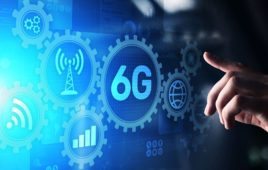We’ve been told to expect it and it’s finally here: Rising data revenue is failing to offset declines in voice. During the fourth quarter, Verizon Wireless, Sprint and Canadian carriers Rogers Communications and Telus all reported declining ARPU despite rises in data sales.
Verizon’s ARPU fell 2.2 percent in the fourth quarter despite rising data sales, which now comprise $16.24 of sales per customer. Sprint’s ARPU dipped 1.78 percent while its data sales rose to $16.75 per customer. Up in Canada, both Rogers and Telus reported declines in ARPU despite growth in data revenue.
For the most part, Sprint attributed the decline in voice revenue to lower usage and falling roaming charges. Verizon didn’t give a specific reason for the decline in ARPU, but given the growth in its data sales, it’s a safe bet it saw voice usage fall as well. Similarly, both Rogers and Telus said voice usage and roaming sales were down as well.
This could, of course, be a trend stemming from the economic recession, but I think we’d have seen it a lot earlier if that were true. It’s more likely that data is a more preferred method of communicating for a growing segment of the population.
Speaking for myself, I’d rather send a text than make a phone call unless I’m talking to my parents: My mom is somewhat perplexed by texting and my technophobic father is a landline devotee who doesn’t have an answering machine, much less a cell phone. I consistently use more text messages every month than voice minutes, as does one of my coworkers. Last month, he spent just 179 minutes talking on his iPhone but sent 600 text messages. As he puts it, it’s like chatting online.
I know we’re not the only subscribers out there who communicate like this. To be sure, one of the fears early on about SMS was that it would cannibalize voice minutes. Verizon Wireless, AT&T, Sprint Nextel and T-Mobile USA have all increased their SMS rates from 10 cents per message to 20 cents per message without a monthly texting plan.
It’s not clear how fast data growth will offset declines in voice revenue. AT&T was one of the few Tier 1 operators that managed to boost its ARPU last quarter. Of course, it benefits from iPhone traffic, but its data sales are actually a smaller percentage of overall ARPU, at 28 percent, than Verizon’s, whose data sales comprise 32 percent of overall sales. That means that whatever AT&T is doing to keep voice sales strong appears to be working despite those iPhone users who complain about dropped calls.




